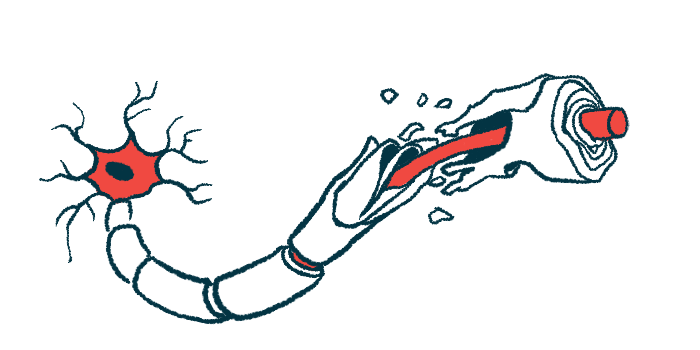New MRI technique allows for more precise imaging of myelin sheath
Approach overcomes key barriers to directly mapping myelin in MS patients
Written by |

Scientists have developed a technique to more precisely map the myelin sheath, the fatty covering around nerve fibers that is damaged in multiple sclerosis (MS), in people undergoing an imaging scan.
While further work is needed, its use “produced promising initial results,” the scientists wrote, noting that this approach, once optimized and embraced, could allow for a more accurate MS diagnosis and better monitoring of myelin damage and repair in MS patients.
The method was described in the study, “Myelin bilayer mapping in the human brain in vivo,” published in Magnetic Resonance in Medicine.
Current MRI technology cannot directly image the myelin sheath in MS patients
MS is caused by inflammation in the brain that damages the myelin sheath, leading to problems with nerve signaling and ultimately giving rise to disease symptoms. To monitor myelin damage in patients, researchers and clinicians for decades have relied on magnetic resonance imaging or MRI.
MRI basically works by using powerful magnets to generate a signal from hydrogen atoms. Specifically, an MRI detects signals from hydrogen atoms in water, which is two parts hydrogen and one part oxygen. Because a traditional MRI detects water, it cannot directly measure myelin — made up of fats and proteins. Instead, it indirectly estimates myelin amounts by measuring water between the layers of myelin.
These fats and proteins also contain plenty of hydrogen atoms, so it’s theoretically possible to directly image myelin itself during an MRI. But this technically hasn’t been achievable, largely because signals from hydrogen in myelin are much briefer than signals from water, and a conventional MRI scanner is unable to take measurements quickly enough to detect them.
“Put simply, the hydrogen atoms in myelin tissue move less freely than those in myelin water. That means they generate much briefer signals, which disappear again after a few microseconds. And bearing in mind a microsecond is a millionth of a second, that’s a very short time indeed,” Markus Weiger, PhD, co-author of the study at ETH Zurich in Switzerland, said in a university news story.
The researchers’ technique involves a specialized MRI scanner that specifically analyzes a patient’s head, and contains especially powerful magnets allowing faster detection of signals.
“The greater the change in magnetic field strength generated by the three scanner coils, the faster information about the position of hydrogen atoms can be recorded,” said Emily Baadsvik, a researcher at ETH Zurich and the study’s first author.
Further refinement needed, but accuracy seen in proof-of-concept tests
The new system is not without limitations. In particular, scans take about an hour and a half, which the researchers said is “at the upper limit of what cooperative volunteers can be expected to manage.”
Still, they showed in proof-of-concept experiments that their system could accurately image the myelin sheath in healthy adults with a resolution of less than two millimeters.
Researchers now plan to further refine the technology and test it on MS patients, and they ultimately hope to work with industry partners to bring the technology into clinical use.
“Myelin bilayer mapping has the potential to meet the myelin monitoring needs of clinical and research communities, be it for applications in basic research, diagnosis, disease monitoring, or drug development,” the scientists wrote.
“We’ve shown that our process works,” Weiger said. “Now it’s up to industry partners to implement it and bring it to market.”






